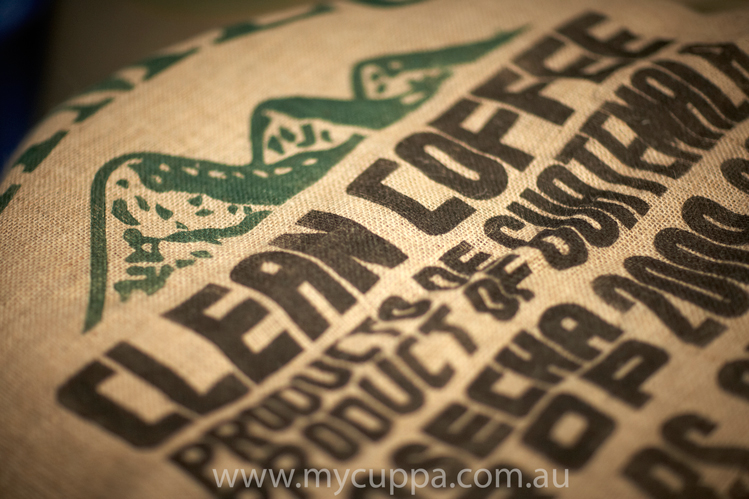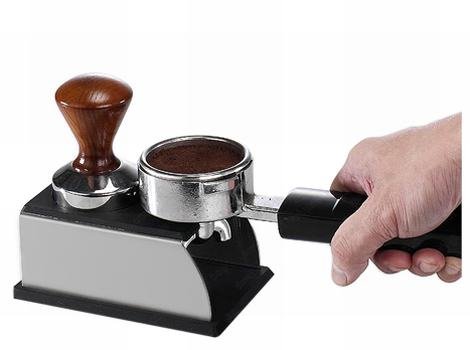September 2014 - Guatemala - Be careful when you tamp
Date Posted:1 September 2014
Guatemala

It's funny how you can remember all the finer details of your first true love - the time, place, what you were wearing, the music and sounds of the era, etc.
So it is with memories of my first serious bean infatuation - Guatemala.
We were commissioning a new roaster and I was visiting the warehouse of a coffee broker and asked them "show me your best coffees". Over in a corner was a large pile of beautifully decorated jute bags - Guatemala Estrellas 5.We took coffees from many origins that day but roasted and then cupping the Guatemala was an almost life-changing experience.
I had no idea whether the roast was good, bad or spectacular but what I was tasting in the cup was pure heaven - the richest, darkest cocoa combined with intense sweetness and sparkling acid.
As the weeks passed, I roasted many more batches of the Guatemala and each was just as memorable as the previous. Perhaps I was suffering from "coffee goggle syndrome".......surely, this must have been a lucky fluke !
Some months later, I stumbled across an article in an industry magazine written by a highly respected US expert - "Guatemala proves once again why it is the "king" of Central American coffees". The article went on to wax lyrically about the superb cup attributes of fine Guatemalan coffees.
Ever since, Guatemala has remained a fundamental component in our coffee portfolio.
Guatemala has an almost perfect micro-climate for growing coffee - high elevation, rich volcanic soils and generous rainfall. There are 8 producer regions in Guatemala, however, by the time the coffee arrives here in Australia, we generally refer to the common types of Antigua and Huehuetenango (a.k.a. Whey-Whey).
Antigua is what many refer to as the "classic" Guatemalan. The coffee farms are like the wine industry's equivalent of the old vineyards with aged trees and a diverse eco-climate. On their day, a Guatemala Antigua can out-punch all contenders - extremely rich and complex cups.
Antigua delivers a stronger flavour, infused with dark chocolate and bright sparking acidity. Sometimes, the dark chocolate can be mistaken for bitter-sweet. In milk-based espresso, an Antigua is pure delight.
Huehue's are fruitier and have extremely juicy body and length. Huehue's still carry the famous Guatemalan chocolate note, but you can also add nuts, spice, caramel, cloves, figs and raisins. We use a lot of top-grade Huehue's in our popular blends and in my opinion the Huehue's are the most exciting to work with in terms of profiles and complexity.
Guatemalan coffees are hard beans that require careful adjustment of the grinder. In terms of all Central and South American coffees, Guatemalan's generally delivery the highest flavor and longest finish with superb balance. They are exceptionally good for use in a milk-based espresso such as cappuccino, latte or flat white.
We have fresh crop from origin in our warehouse now and it's spectacular.
To order Guatemala coffee beans, please follow this link.
Be careful when you TAMP !

No, it's not a new dance step or dangerous stunt, but it's likely your tamping technique could be one of the key factors holding back your ability to achieve improved quality and consistency in your espresso shots.
Tamping is the last human step for the espresso process (excluding the shot time or duration).
We have mentioned the term "channeling" previously and it's the key reason some espresso shots are just ordinary (assuming grind and dose is accurate).
The ground coffee in a group handle (portafilter) acts as resistance to the flow of water under pressure. If this ground coffee is not correctly packed, channels will develop and result in both under and over extracted coffee.
The first sign of channeling is speed of a pour (although that could be a dose issue as well). If the pour speeds up prematurely and color blondes quickly, you need to inspect the used puck to check for channels.
Typical tamp issues include Un-level , too much pressure or tamping multiple times.
Too much pressure and tamping many times is a common mistake by novices. This leads to pockets of compaction forming and increases the risk of channeling.
I believe there is no such thing as tamping "too lightly" so long as you have a consistent and well packed group handle.
Personally, I am a big fan of light-tamping



